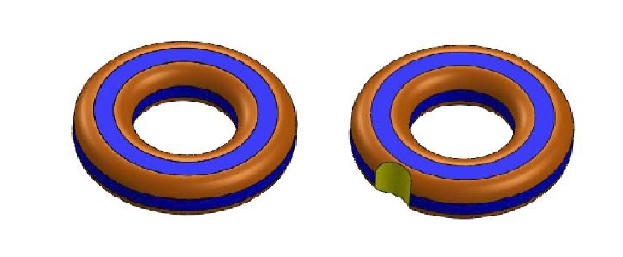|
A method for Quality or making things the same
Definition: Shot transfer size: size of the shot in weight or volume upon switch over from filling to pack Fill time: the time it takes for the screw to move from start of injection to transfer. Consistency: how much identical things are, same time every time, same weight each time, in a manner repeating each time
While shot size referrers to whole of the shot, shot transfer refers to that point in filling prior to pack and hold. The fill time refers to that time to fill the part, (a position change prior to pack and hold) and consistency is what is aimed for in processing.
From a consistency stand point one can use fill time as a monitor, if transferring by position, and then monitoring the time to reach said position, on a shot to shot basis. From a machine set up point, there is no set switch or setup which allows us to set fill time, all that may be set is stroke, transfer point, or points for various speed/velocity settings, suck back, pressures available, and time available. Fill time is a result, and thus cannot be set but may be recorded.
Consistency / repeatability are what one hopes for in setting up a machine to the same conditions as the set up sheet notes. How does one confirm such a choice? The simplest method may be to note that the fill time is the same, meaning that the time it takes to inject to the transfer point remains what one has had in the past. While this is a great reference point it must further be checked by the volume of material injected into the tool. This volume is directly related to fill time, or should be.
Basically in the original testing and or setup one should (if short shots well eject) take both pack and hold pressures off the machine and produce parts only on fill, monitoring both the fill time and reaction of the screw ram upon reaching the transfer point. What is meant is that does the screw bounce back, stop, or continue forward upon reaching the transfer point.
Screw bounces back;
In this condition the screw has injected the material and there is enough pressure forward of the screw tip to cause the resulting zero pressure of pack and hold to push the screw back. This confirms that the changing of the pack and hold pressures on this machine did in fact go to zero.
Secondary it may confirm that enough material was injected into the part for 90 to 98% fill or that too much was pushed into the cavity. Only the weighing of the shot and comparing to a full shot weight well the actual results of what is happening be known.
Screw holds position;
In this condition it shows that all is okay, but if a hydraulic machine one may wonder how full a part is, but on an electric machine it should stop at this point. This should yield a shot hopefully short that can now be weighed.
Screw continues forward;
In this case the hydraulic or electric architecture of the machine is such that even though one has applied zero pressure to pack and hold the machine it is adjusting to continue on with what it considers to be good molding practice. The machine must be adjusted by decreasing injection time, turning off packing and holding time. It is important to move this time taken off to the cooling time so overall time remains the same.
What is now established is the shot weight at transfer. Basically the screw comes forward on fill, and fills the cavity to the point necessary, or what has been established to run a good part. The result is a weight, which now corresponds to a fill-time, which is corresponding to a shot size to transfer point for this particular machine.
To view consistency, one could now run 10 or 20 shots of short parts under these conditions and then weigh the shots and possibly also the cavities to establish whether or not the machine process is consistent. Basically looking at and comparing the weights. Was fill time consistent, and was screw recovery consistent?
The real result is that a volume (shot weight) was established which corresponds to a fill-time, or more simply put the same amount of material was injected into the mold in the same period of time. Thus when and if starting up, troubleshooting, and or moving this mold to another press a reference point has been established. Further in running the test one has seen whether or not the press, process, material are consistent, in a fairly easy test.

The above parts show a full part on the left and one that is short on the right. In the final analysis of what is the shot size at transfer that is up to the processors at the time, and one final calculation would be to do the math and compare it to a full part shot so one knows if the shot is 98% of full or 75% of full.
SLSILVEY
01032015.01
Visit our website
|